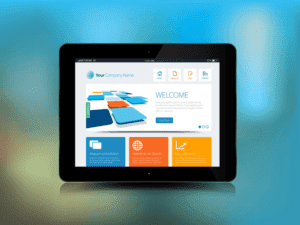
The National Association of Information Destruction (NAID) certifies shredding services, and working with a NAID-approved vendor can increase the security of document disposal. Some external agencies, such as the Payment Card Industry Security Standards Council (PCI SSC), require businesses to keep documents for PCI compliance. Our best expert advice on how to grow your business — from attracting new customers to keeping existing customers happy and having the capital to do it. Hyland helps organizations in every industry seamlessly integrate their content, data, and Cash Flow Management for Small Businesses processes to provide the right information to the right people, where and when needed.
Monthly Mileage Log Template
Ensure all documents have served their intended purpose before discarding them, not just with the IRS but also with other parties such as creditors, attorneys, insurance providers, etc. Bookkeepers help small businesses create and manage their financial records, process transactions efficiently and accurately and reconcile various financial accounts. They also ensure that these processes are reported accurately, providing valuable financial insights and helping guide future business moves. They help businesses remain profitable and make data-informed decisions. The easiest way to do small business bookkeeping is by using accounting software, such as FreshBooks. FreshBooks makes it easy to automate large parts of the bookkeeping process, simplifying this vital task while ensuring accurate financial reports, tracking, and records.
Essential Business Owners’ Guide

A far better approach is to develop a record-keeping strategy and execute it according to plan. Maintaining records — legal, financial, employment, etc. — beyond regulatory requirements not only costs time and money, but also may unnecessarily expose your business to litigation. The Smartsheet platform makes it easy to plan, capture, manage, and report on work from anywhere, helping your team be more effective and get more done. Report on key metrics and get real-time visibility into work as it happens with roll-up reports, dashboards, and automated workflows built to keep your team connected and informed.

Step 2: Categorize your business transactions

A portion of the value of your assets may be deducted against taxable income through depreciation. If your company sells an asset, there may be a financial gain or loss, which will either increase or reduce your taxes. After scanning your receipts, Shoeboxed will create reports that you can send for approval immediately. Shoeboxed saves small business owners time and effort by automating certain simple but time-consuming tasks, leaving the business owner more time to spend on contribution margin more important things. Except in a few cases, the law does not require any special kind of records.

So be sure to secure your online business records with a strong and unique password, enable two-factor authentication, and store them in an enterprise password manager. You can set up a digital document management system to help keep track of all your business documents. It’s even possible to install a document control system that determines how often documents are reviewed and updated. Due to the Period of Limitations, three years is the suggested duration. You have a chance to make changes to your tax returns during this time and are eligible for an audit by the IRS.
- Single-entry accounting records all of your transactions once, either as an expense or as income.
- Bill.com ultimately lets you spend less time entering and paying bills, which is a big part of bookkeeping.
- You want to be at your best when you’re looking at figures that explain your business’s profitability and help you chart a course for progress.
- Digitizing your records is also a great way to avoid accidentally tossing them in a move or an overzealous fit of spring cleaning.
- Linda is a nationally recognized speaker, educator and business consultant, specializing in business planning and financial management.
What is a financial record-keeping system?
- Here, you can learn about managing small business financial records and the different ways to file them.
- Whether it’s cash basis or accrual, choose the system that’s most appropriate for your specific needs and industry.
- As stated by the IRS, keeping records for your business is something all business owners must do.
- Your cash flow statement shows how money moved into and out of your business in a given period.
- Once that information has been entered into your accounting system, keep a copy as confirmation.
- At the end of each pay period, you’ll calculate the gross pay for each employee (using their payroll information) and then apply any taxes and withholdings.
Using the data you gain from keeping a ledger, your next step will be to generate and prepare financial reports for analysis. The major reports to include are the profit and loss, the balance sheet, and a cash flow analysis. Additionally, the aged accounts receivables and aged accounts payables reports are helpful in knowing which clients have not paid and which vendors are yet to be paid. These reports record keeping for small business will help you gain greater insights into the financial health of your small business. Income that flows into your business will generate a receipt or invoice.
- The tool lets you securely store, organize, and share documents, enhancing collaboration and productivity.
- Keep in mind that if you pay yourself a salary, you can generate pay stubs to show proof of income to banks and the IRS.
- They contain valuable information, such as contracts, invoices, reports, etc.
- Use this mileage log template to track business vehicle use and mileage costs.
- These tools can significantly reduce the time spent on bookkeeping and improve accuracy.
Customize with a logo and business details, and enter an invoice number, date, customer ID number, and payment terms for each invoice. Fill in the itemized list of payments due, and adjust the tax percentage to calculate the total amount owed. We’ve collected 23 of the top bookkeeping templates for small business owners.
- Bench will save you a ton of time because they completely take bookkeeping off your plate.
- A ledger is a book that contains the totals from all of your journals.
- With these bookkeeping apps, there’s no longer a need to manually track transactions, type information from receipts, or input income and expenses.
- Small businesses also manage their own accounts receivable to make sure they get paid on time for goods and services that have already been bought or rendered.
This is mainly due to the Period of Limitations, which is the time during which you can amend your tax return, or during which the IRS can perform an audit on your return. If you’re deducting meals and entertainment, it’s even more complicated. You might have to submit a list all of the people who were there with you when the expense occurred, and what you talked about (really—the IRS wants to know if you talked shop). In this guide, we’ll walk you through which records you’re legally required to keep, how long you should keep them, and how to make sure you don’t lose them.
